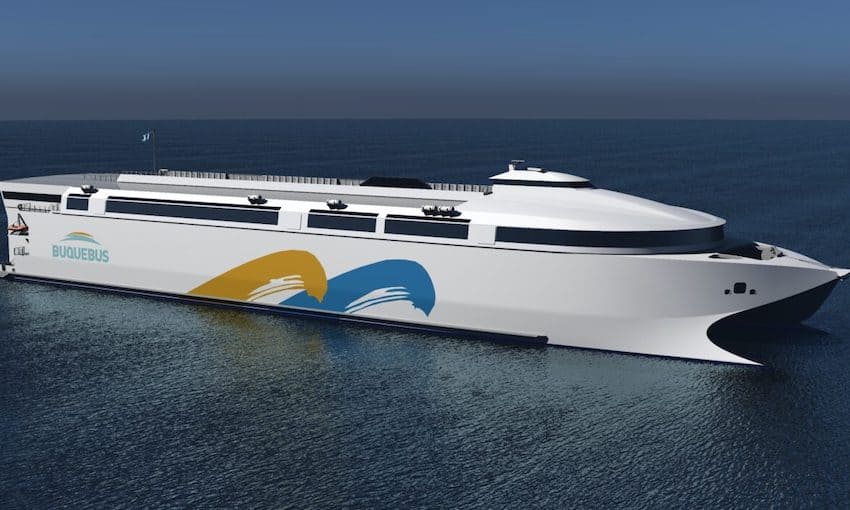INCAT Tasmania is building what it claims is the world’s largest lightweight battery electric ship.
The Australian shipbuilder is constructing the 130-metre-long ro-pax vessel for South American ferry company Buquebus.
Incat said the ship will be 100% battery electric, with an energy storage system that it says is four times larger than that of any other electric or hybrid ship currently operating.
The batteries power a series of e-motors that drive the water jet propulsion system. The electrical system integration is by Wärtsilä and ESS by Corvus Energy.
Incat booked the order with Wärtsilä in July 2023.
Incat founder Robert Clifford said the shipbuilder was proud to be building the ship for Buquebus, who shares a vision for low-emission shipping.
“This worldwide interest in Incat’s capabilities to deliver electric ships is a great opportunity for Tasmania and we expect this interest to magnify,” Mr Clifford said.
“We are already increasing our workforce and have just finalised plans for the recruitment of at least another 200 employees over the next 12 months with the expectation that our workforce will more than double in coming years.”
Incat managing director Craig Clifford believes the build of the new vessel would have leading zero-emissions propulsion and storage systems technology.
“Once in operation the shore-side charging systems will have 50% more capacity than any current installation world-wide,” he said.
“The [world’s] first Incat Hull 096 will have a capacity for 2100 passengers and crew, 225 cars and will also include a duty-free shop of over 2000 square metres on the one level.”
Craig Clifford said Incat had received “extraordinarily positive” feedback from overseas, and he expects the company will see many more battery electric ships built at its shipyard in Tasmania.
“The opportunities for jobs and investment here in Tasmania are exceptional,” he said.
“The Australian federal government has a clear plan for decarbonising the economy and with 100% renewable energy and already net zero emissions having been achieved here in Tasmania we are ideally placed to build zero emission ships for the world right here.
“In fact, due to Tasmania already having achieved overall net zero emissions we are the only location on the planet that is able to construct zero-emission, battery electric ships in an already net zero emissions environment.”
And Roger Holm, president of Wärtsilä’s Marine Power business, said the overall high-efficiency of the next-generation ferry represented a game-changing advancement in catamaran design.
“We are proud to have contributed our strong know-how in integrating our ship electrification solutions and propulsion equipment,” Mr Holm said.
“The battery power pack that we are supplying will be the largest ever supplied with a unique eight waterjet propulsor configuration.
“The eight e-motor waterjet propulsion configuration is the most efficient available on today’s market for this speed range and type application while boasting all the benefits from Wärtsilä’s axial flow waterjet technology – low weight, shallow draft, superb manoeuvrability, and low maintenance.”
Incat said it is now working toward the construction of its second but smaller battery-electric ro-pax ferry.





